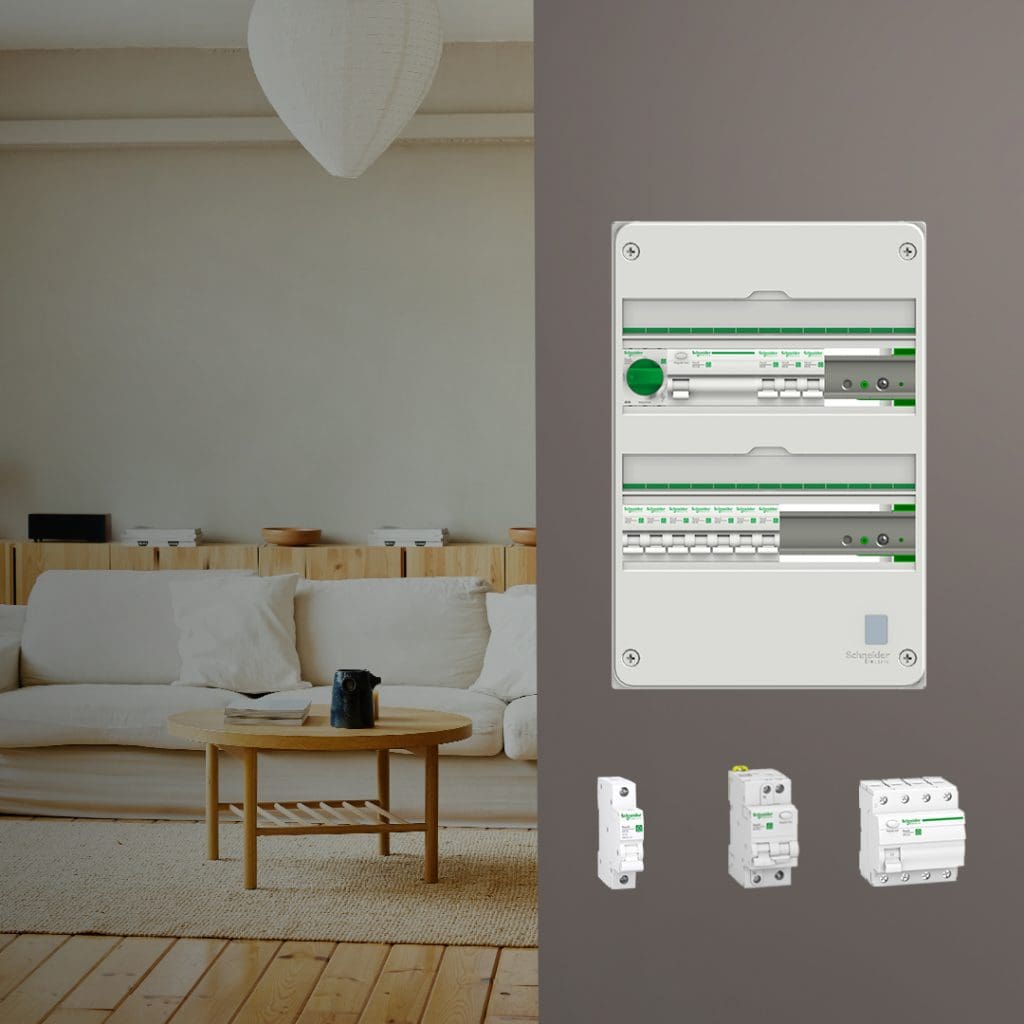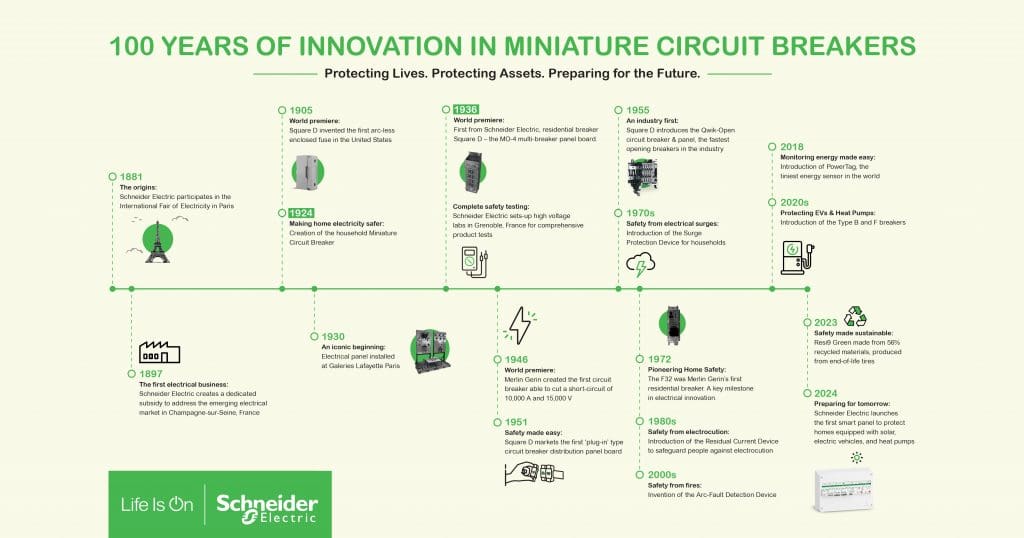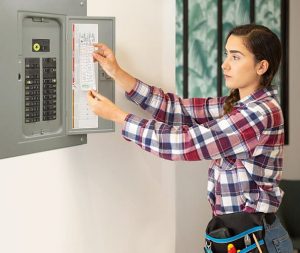Let’s start with some striking data: according to our recent survey, 41% of Gen-Zs, meaning people under 34 years old, do not know the role of the electrical panel in their home. Even more surprisingly, 25% of them do not even know where the electrical panel is located. These statistics highlight a significant knowledge gap, emphasizing the need to start with the basics.
The crucial role of electrical panels
Simply put, the electrical panel safely powers our lives at home. It’s worth repeating because of its utmost importance: the role of the electrical panel is ensuring electricity is received and then sent around the home safely.
The largest electrical risks to homes come from short circuits & overloads – where your home receives and uses more power than it requires.
Located in the panel are circuit breakers. When faced with short circuits and overloads, these tiny circuit breakers are able to withstand the incredible force of the electrical overload, opening up and breaking the circuit – saving your home and lives from electrical dangers such as fires. When your power cuts, that means your family and your belongings are protected. Consider circuit breakers the unsung mini heroes of modern life.

Celebrating a century of safety
This year, we have a reason to celebrate them more than ever. 2024 marks 100 years of circuit breakers in our homes.
Over the past century, the circuit breaker has enabled you to do endless things safely, many that you may not even realize:
- It safely cut the power when suddenly some water spilled on the multi-socket extension.
- It stopped overheating when too many loads are plugged into the same socket, again by cutting the power.
As technology evolved, extra protection came to complement circuit breakers:
- They made your relaxing bath safe while your partner used the hair dryer next to you (Residual Current Device)
- They protected from fatal electrocution curious toddlers playing with sockets (Residual Current Device)
- They made your TV safe while you watched it during a big storm. Only people born before the 1980’s know that you couldn’t watch TV during a storm (Surge Protection Device)
A legacy of innovation
Schneider Electric entered the electrical market close to 150 years ago, and since then, we have continuously innovated to enhance safety and bring new capabilities through the electrical panel and circuit breakers.

Though created 100 years ago, the household circuit breaker as we know it today really made its way into households in the 1980s. It progressively replaced the fuses that were still common back then, making home electrical distribution significantly safer. From then up until today, a number of add-on devices were developed to increase the protection of people and belongings:
- In the 80s, new surge protection devices protected your home from lightning strikes
- In the 90s, residual current devices were introduced to increase the protection of people and devices from earth leakage, thus reducing the risk of electrocution
- In the 2000s, arc-fault detection devices were installed to safeguard households against fires
- Finally, in 2018, we launched the tiniest energy sensor in the world, called PowerTag, enabling to understand how much electricity is consumed over the breaker or at a load level

At Schneider Electric, we have also been keen to innovate to make installation of circuit breakers easier and simpler. To this perspective we introduced the plug-on breakers to the DIN-rail system, reducing installation times by half or even two thirds for an electrical installer.
Last but not least, we managed to integrate more than 50% of recycled content from end-of-life tyres into a range of our Resi9 circuit breakers, for a more sustainable installation.
The future of home electrification
Now let’s talk about the future. As mentioned, homes are evolving a lot lately with greater electrification and the introduction of the new energy landscape.
The new energy landscape sees solar panels, EV chargers and heat pumps becoming more common in homes, meaning the role of the panel has never been more important.
Let’s say your electrical panel was installed ten years ago, it is sized to only receive power from the grid. Now, you want to produce your own renewable energy, so you install solar panels. Doing this, you double the amount of power received by the electrical panel. In other words, if left unchanged, your installation might not be safe in all situations as it could be overloaded.
As you continue your electrification journey, the natural next step is to buy an electric vehicle, and therefore equip your home with an EV charger. First things first, you’ll call your utility provider to upgrade your power contract to cope with the new load from the EV charger. While doing so, your electrical panel will again be at higher risk of an overload.

And the more you electrify your habits with solar, e mobility and heat pumps, the more your upgraded electrical panel is put under higher risk of overload. Putting your family, home and belongings in potential danger.
These are new elements that the electrical panel needs to adapt to so that your family and home can continue to be safe. But let me ask you a few questions: Is your panel configured for this? Are you only aware that you need to reconfigure your panel for these new installations? When was last time you did it?
Introducing the future of electrical panels
Today, electrical panels are evolving to tackle the challenges of modern homes. They enable you to electrify your home and, produce and consume your own renewable electricity at home in a safe way.
Today’s generation has been brought up in an ever-changing techno landscape, and whether it’s social media, mobile phones, gaming machines or laptops, they are comfortable dealing with new technology and the software programmes or applications that come with it – so should have no problem managing the advanced electrical panels of the future.
For more information on our range of electric panels, circuit breakers or switches, contact one of our experts today using the online contact form or support centre.
Disclaimer: ** A. Electrical equipment should be installed, operated, serviced, and maintained only by qualified personnel. No responsibility is assumed by Schneider Electric
for any consequences arising out of the use of this material.
B. Apply appropriate personal protective equipment (PPE) and follow safe
electrical work practices. See NFPA 70E or CSA Z462 or NOM-029-STPS. **



Add a comment